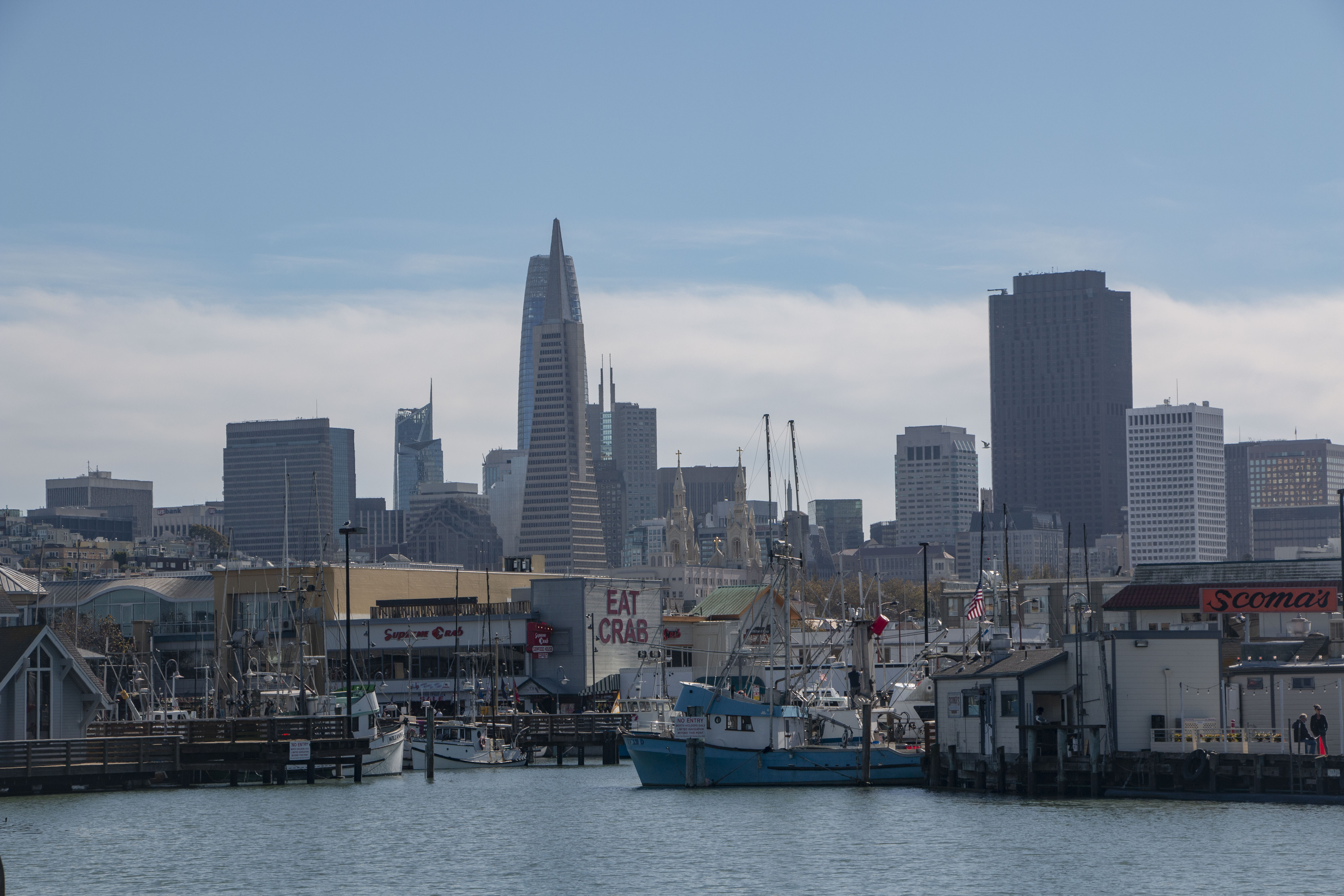
As local Dungeness crab season delays, San Francisco is selling Washington crabs

Thanksgiving is the busiest season for the crab restaurants around San Francisco's Pier 45. A single stall, Crab Station, was selling 500 pounds a day before the pandemic, even though it was surrounded by a row of competitors selling the same Dungeness crabs. “Now, 30 pounds if we’re lucky,” said Caroline Petitt, manager of Crab Station.
“People come all the way down here, ‘Oh gosh, the price is like this much, it’s not local,’ ” said Petitt as she described the scene over the past two years when local Dungeness crabs weren't available for Thanksgiving. “They want to hear ‘the local.’ Everybody gets disappointed.”
Currently, live Dungeness crabs are $22.95 per pound at Crab Station, twice the normal price, with restaurants relying on crabs from Washington, Alaska, and Canada to California to fill the holiday market. The pandemic and the 19-month international travel ban led to a dozen crab restaurant closures on Pier 45, and the delay in launching the local crab season continues to hit the limited number of restaurants struggling to remain open.
For the third consecutive year, the start of commercial Dungeness crabbing has been postponed on major stretches of a northern California’s coast. “The commercial fishery will continue to be delayed in Fishing Zones 3 and 4, from the Sonoma/Mendocino county line to Lopez Point, due to the presence of high numbers of humpback whales in the Gulf of the Farallones and Monterey Bay,” the California Department of Fish and Wildlife (CDFW) announced Nov. 19. The department anticipates conducting the next risk assessment by Dec. 15.
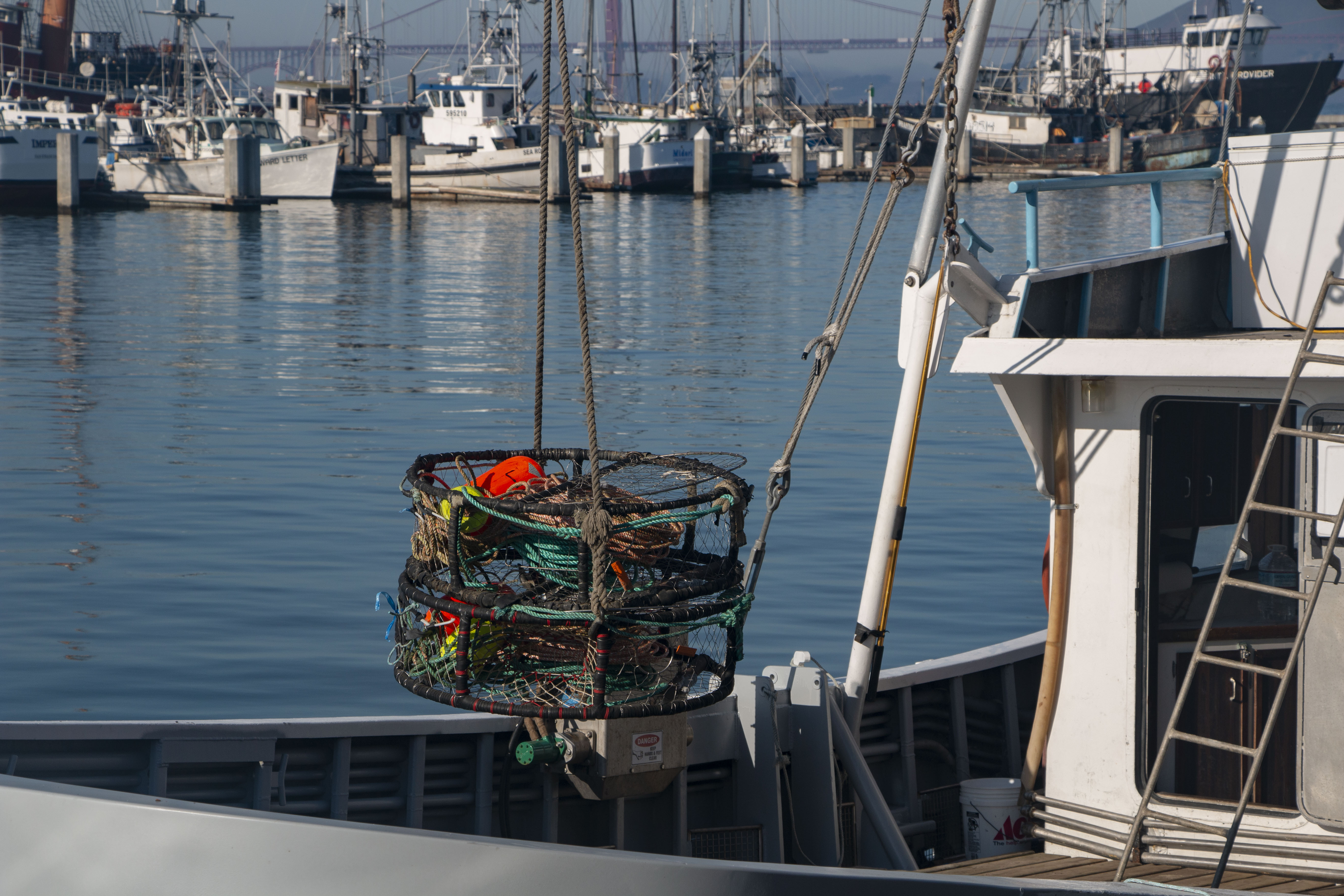
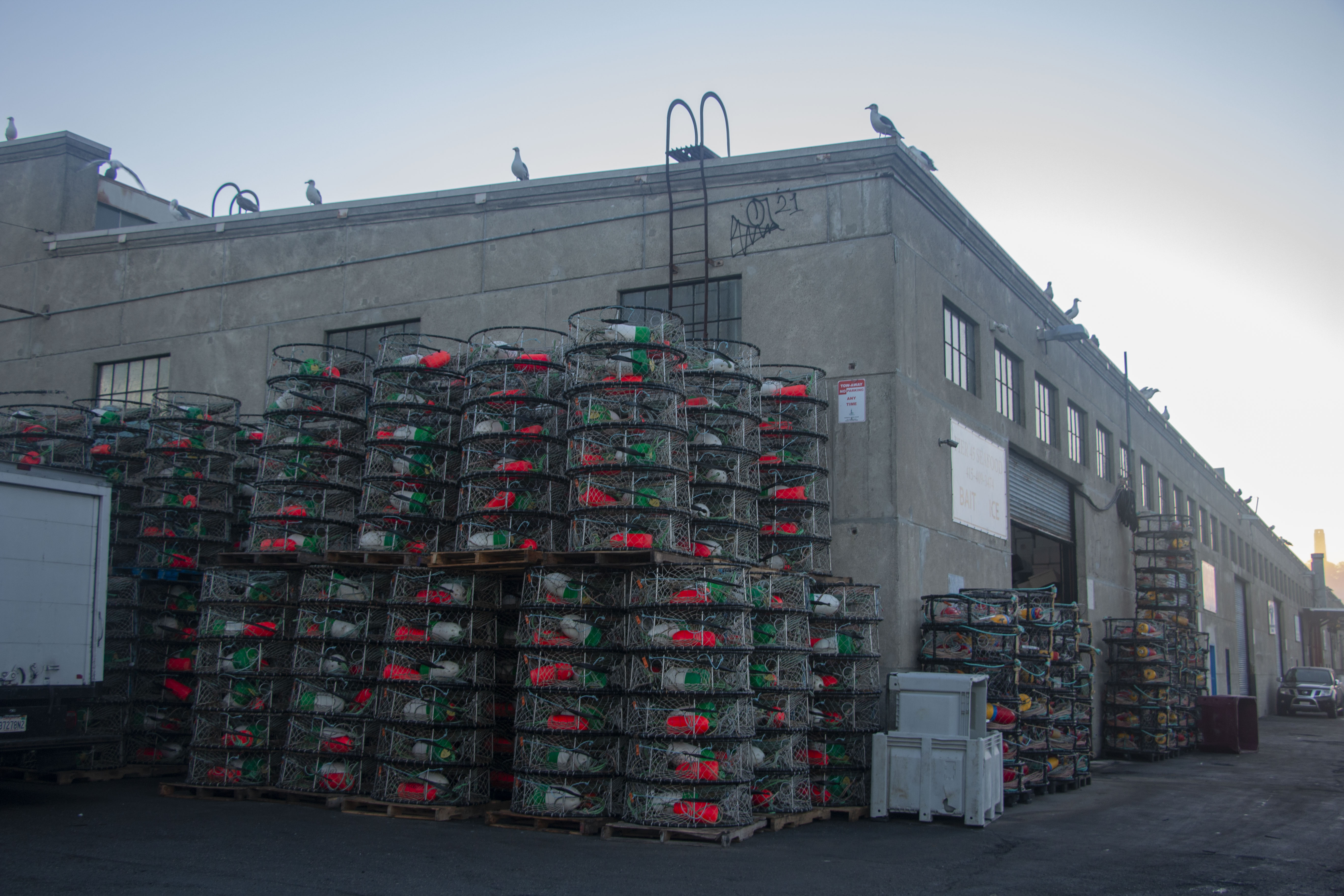
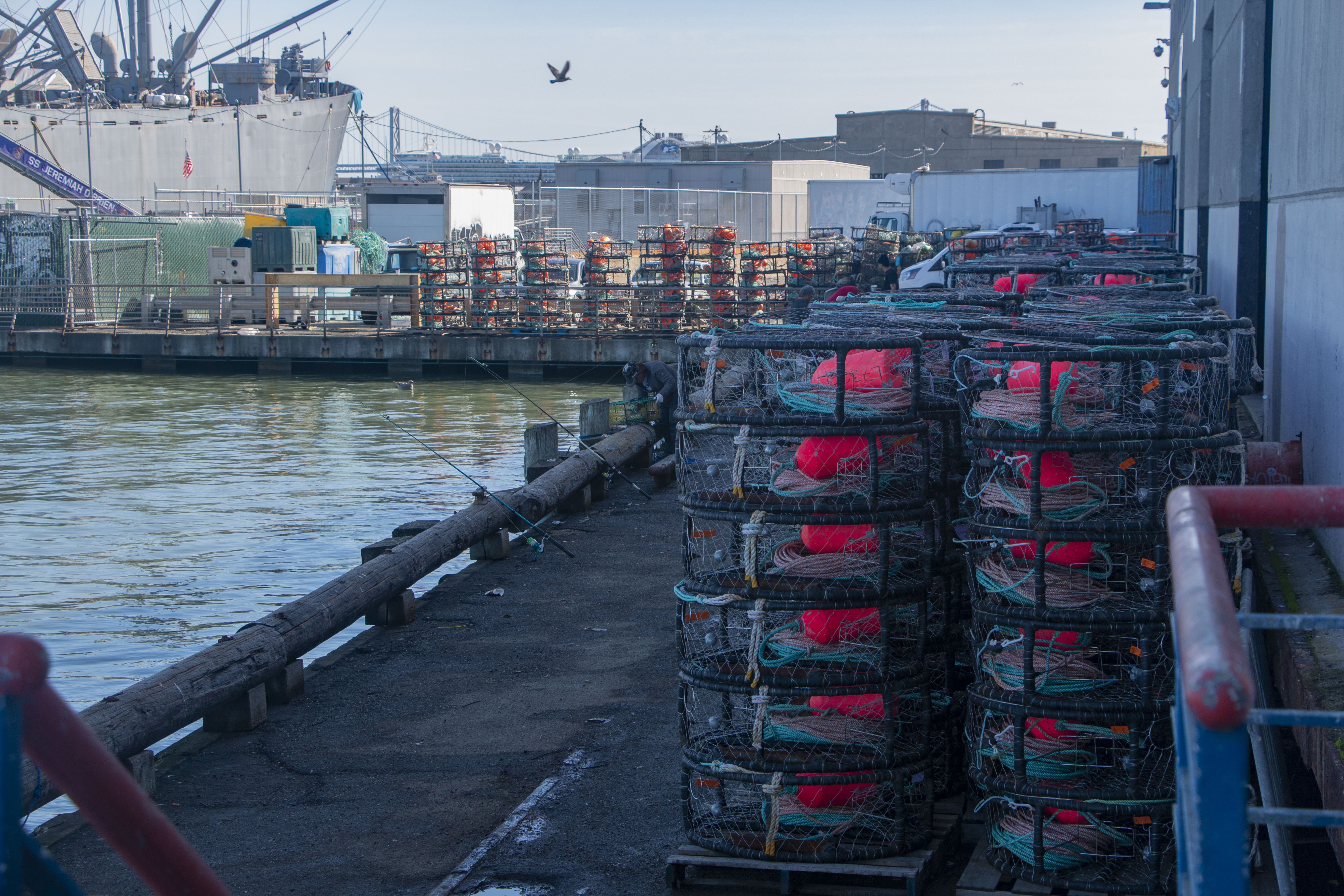
| Crabbing traps were piled up at Pier 45 due to the delay of local crab season.
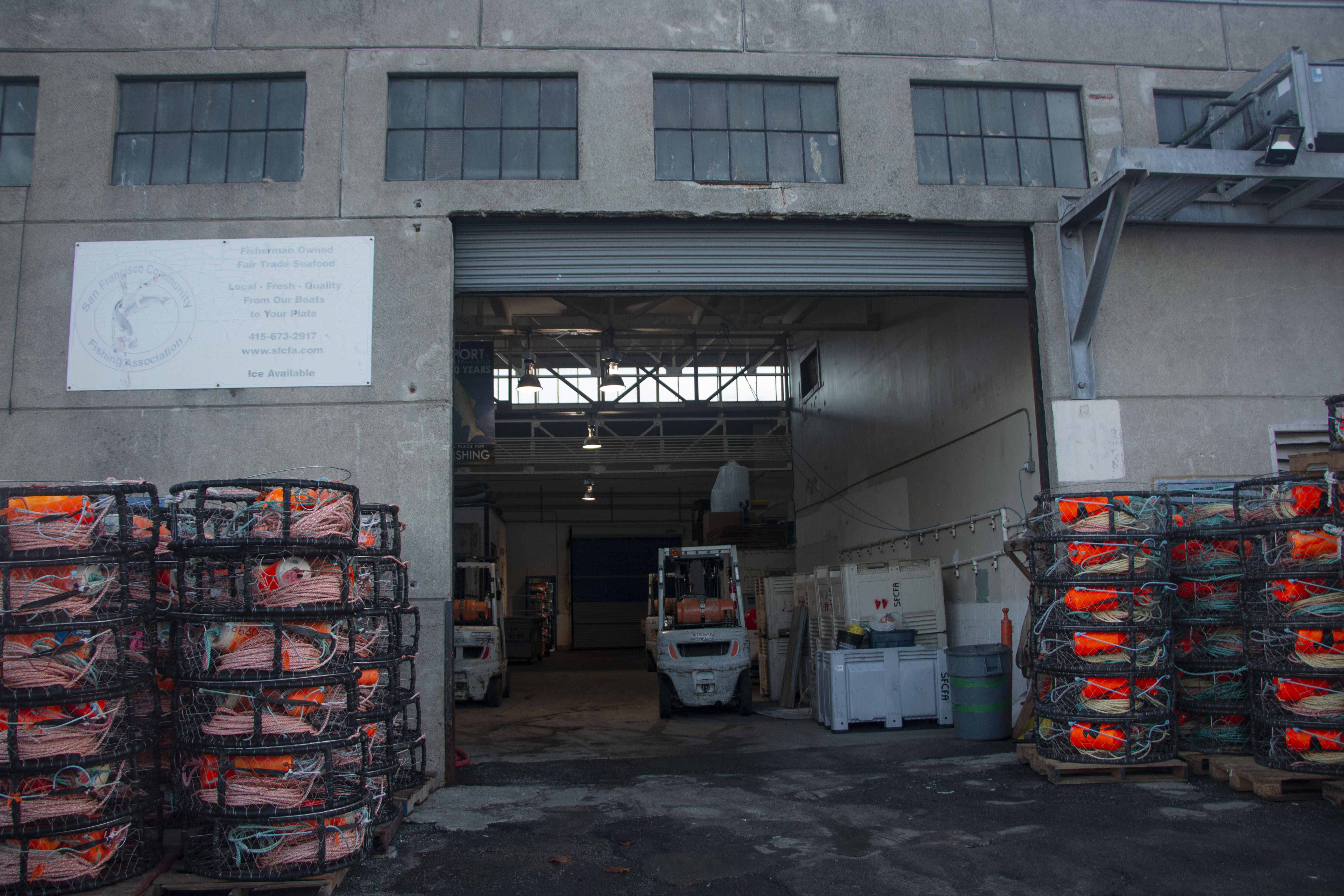
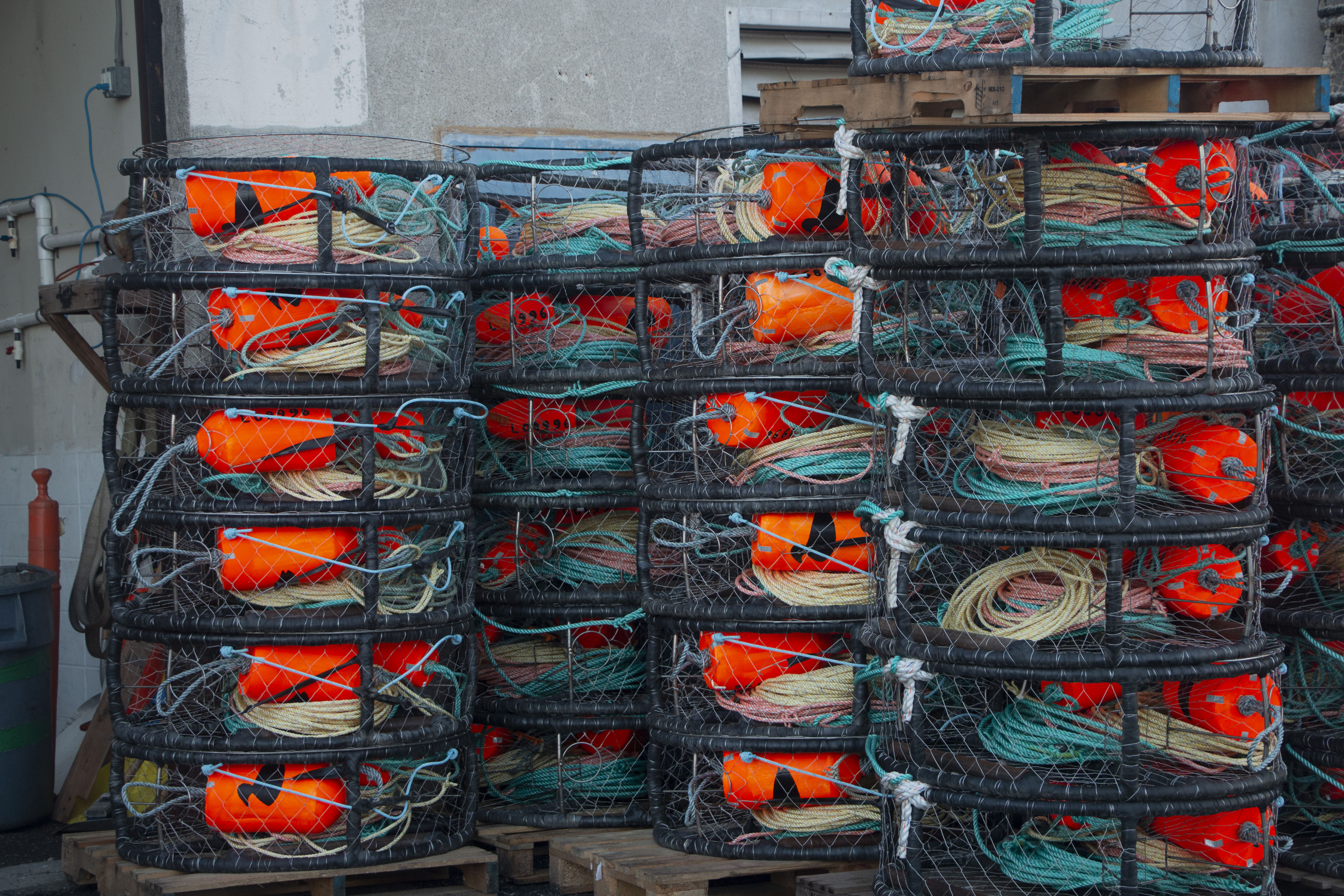
| Larry Collins painted a duck on each buoy as a mark. His traps were placed outside the association storehouse.
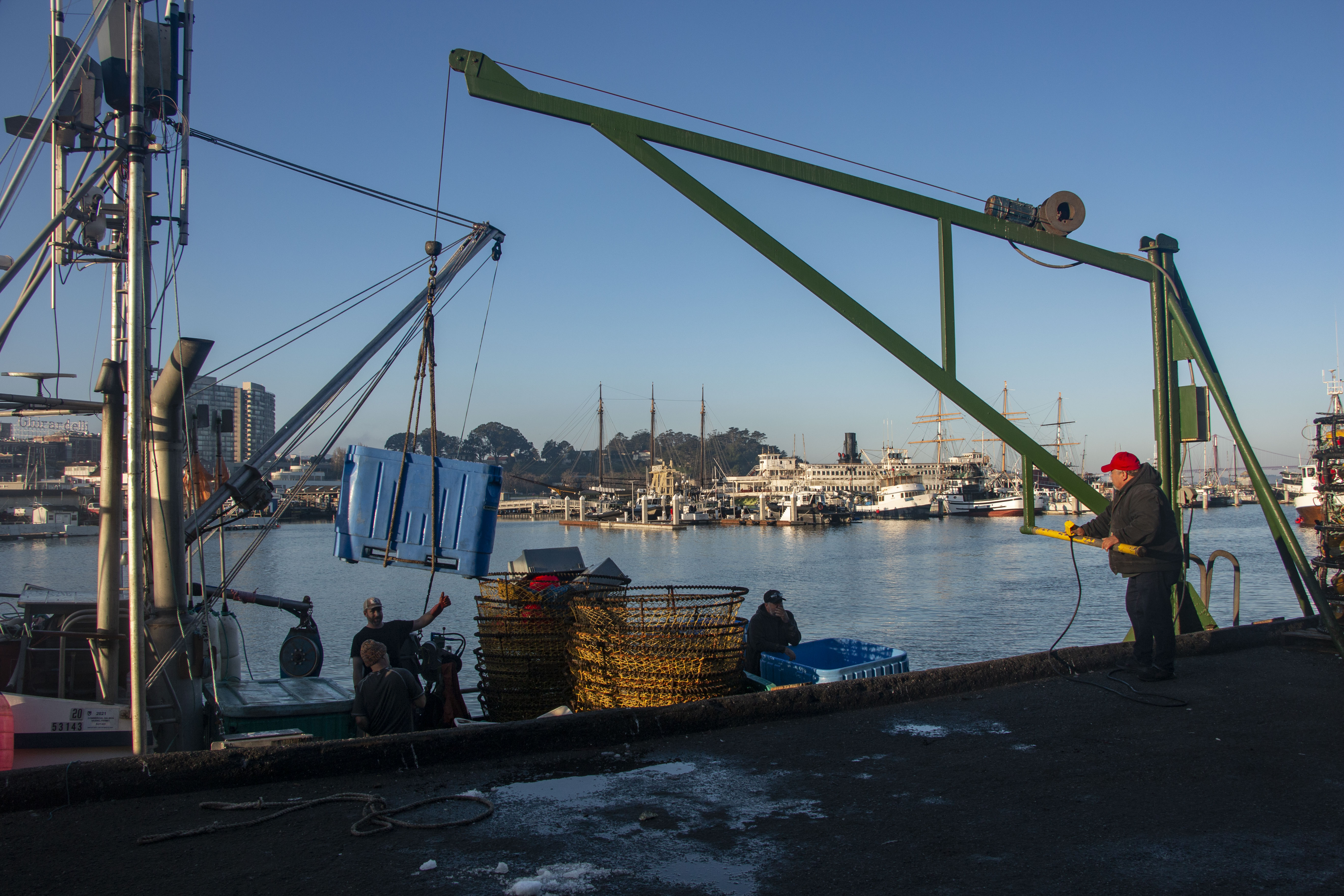
| Larry Collins (in a red hat) was helping load ice to a ship.
Larry Collins, president of the San Francisco Community Fishing Association, a 25-member fishermen’s co-op, said it is unfair that only commercial crabbing is being targeted when neither sports crabbing nor huge container ships face restrictions. “Last year, we tangled only one whale,” said Collins. “There’re eight million people in the Bay Area that don’t get crabs because we tangled one whale?”
“We have some settlement agreement terms that we are continuing to abide by,” said Christy Juhasz, environmental scientist with CDFW. The department is required to reduce marine life entanglement risk. “We’re really trying to limit our interactions based on what species we’re talking about and how endangered they are,” said Juhasz. “With the Pacific leatherback sea turtles, we can’t interact with even one, because they are so highly endangered.”
Normally, the crab season lasts from mid-November to late June. At the end of the season, chain wholesalers with large storage space and equipment stock up so they have supplies until the season reopens in November. “Such as Pacific Seafood, the big company,” said Collins. “We haven’t been able to open for Thanksgiving [last year], so they [wholesalers] were emptying their freezers.”
However, frozen crabs can’t last long. “You can’t freeze that long because [it generates] ammonia,” said Dante Serafini, owner of the Franciscan Crab Restaurant. “It’s called ‘Freezer Burn,’ you can’t go with it the following season.”
For small wholesalers on Pier 45 – most are family-owned – that can’t afford large freezers, bringing in crabs from other states and countries is the only way to maintain their business at the moment. Abul Martirez, a worker with Safe Coast Seafoods, says they import 70,000 pounds of crab from Canada every two weeks, and the business is “pretty good” despite the high price. They buy from upstream sellers at $8.5 to $8.75 per pound and sell for $9.5. “These boxes are filled with crabs when we stock up,” said Martirez, pointing to a row of blue containers stacked against the wall.
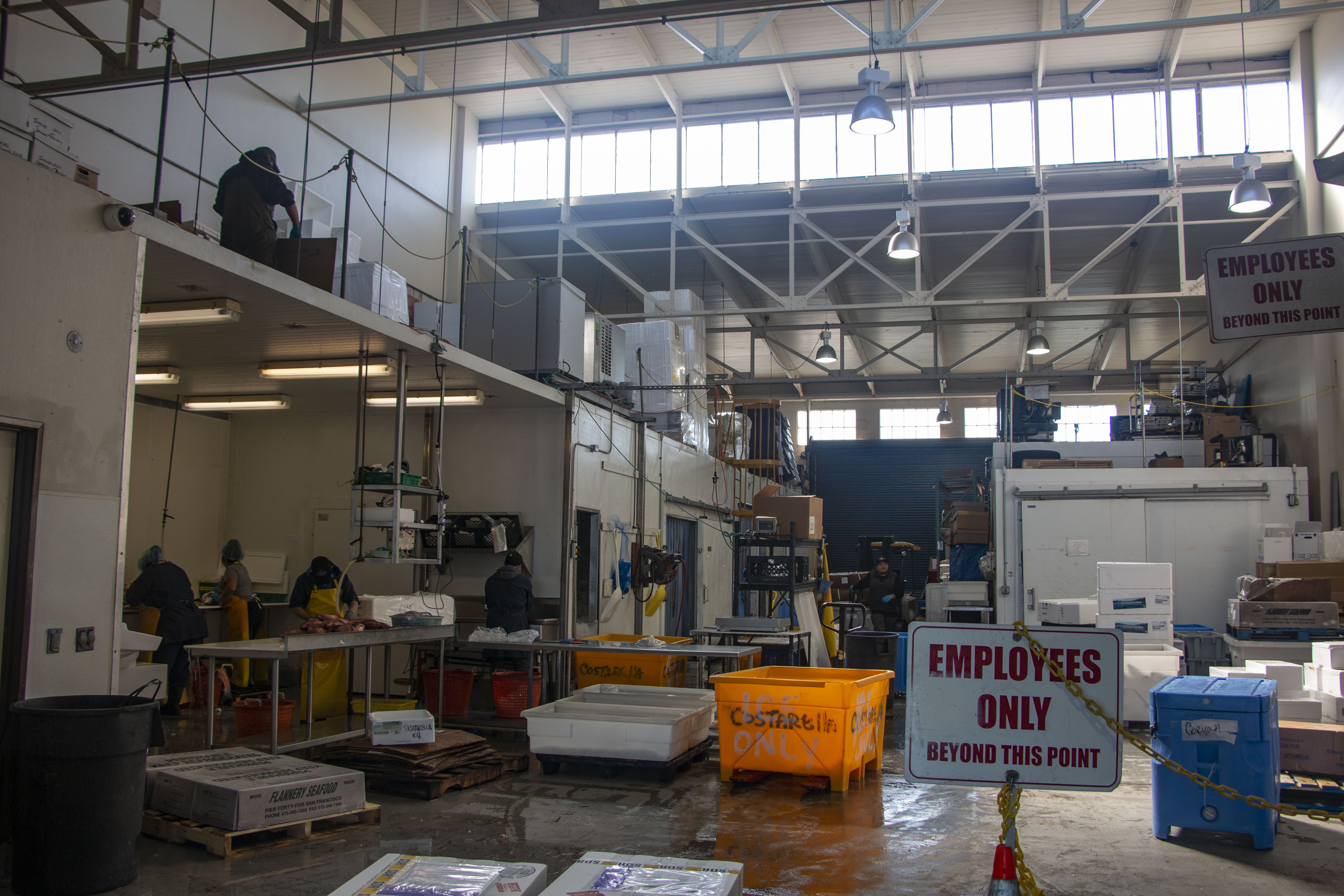
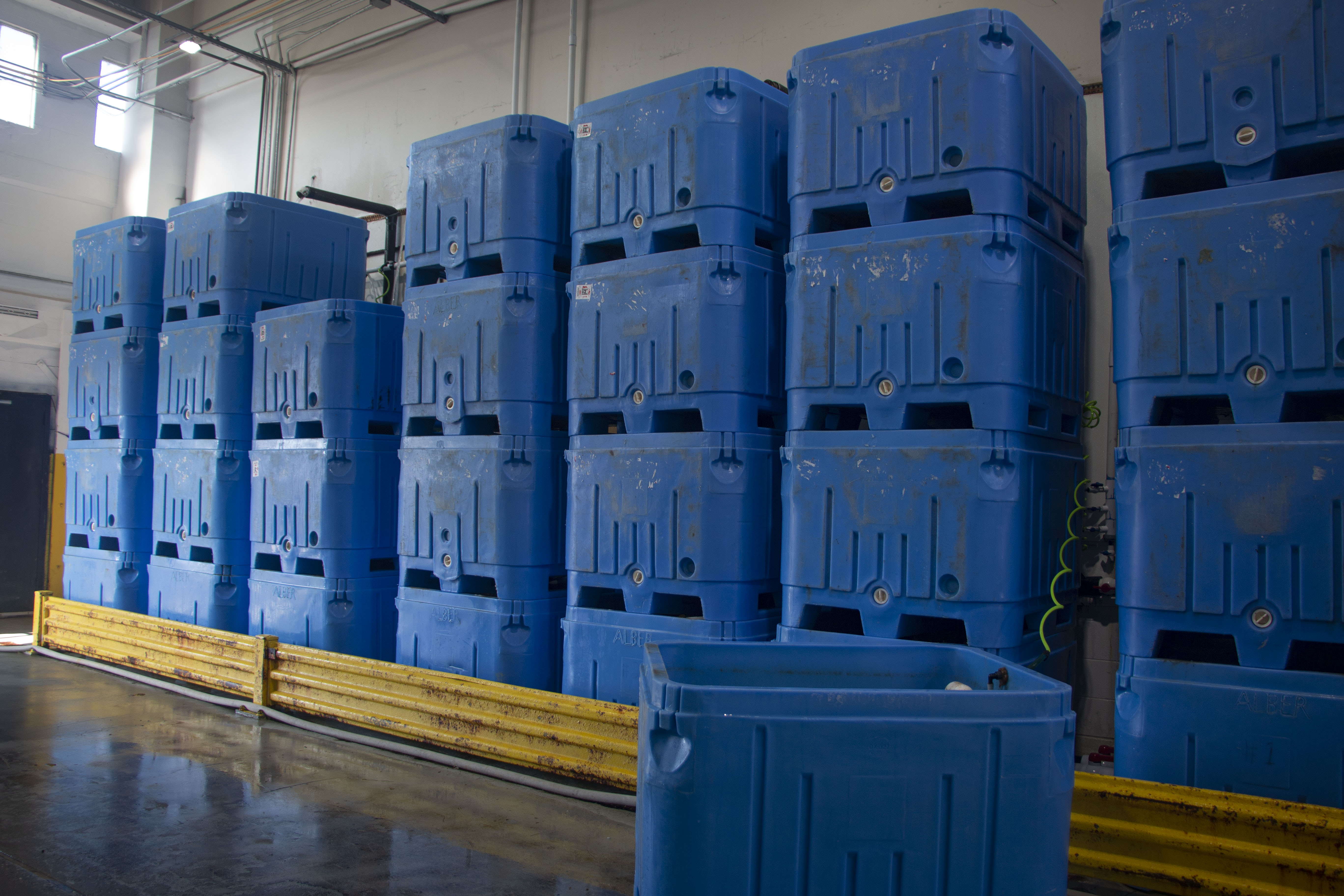
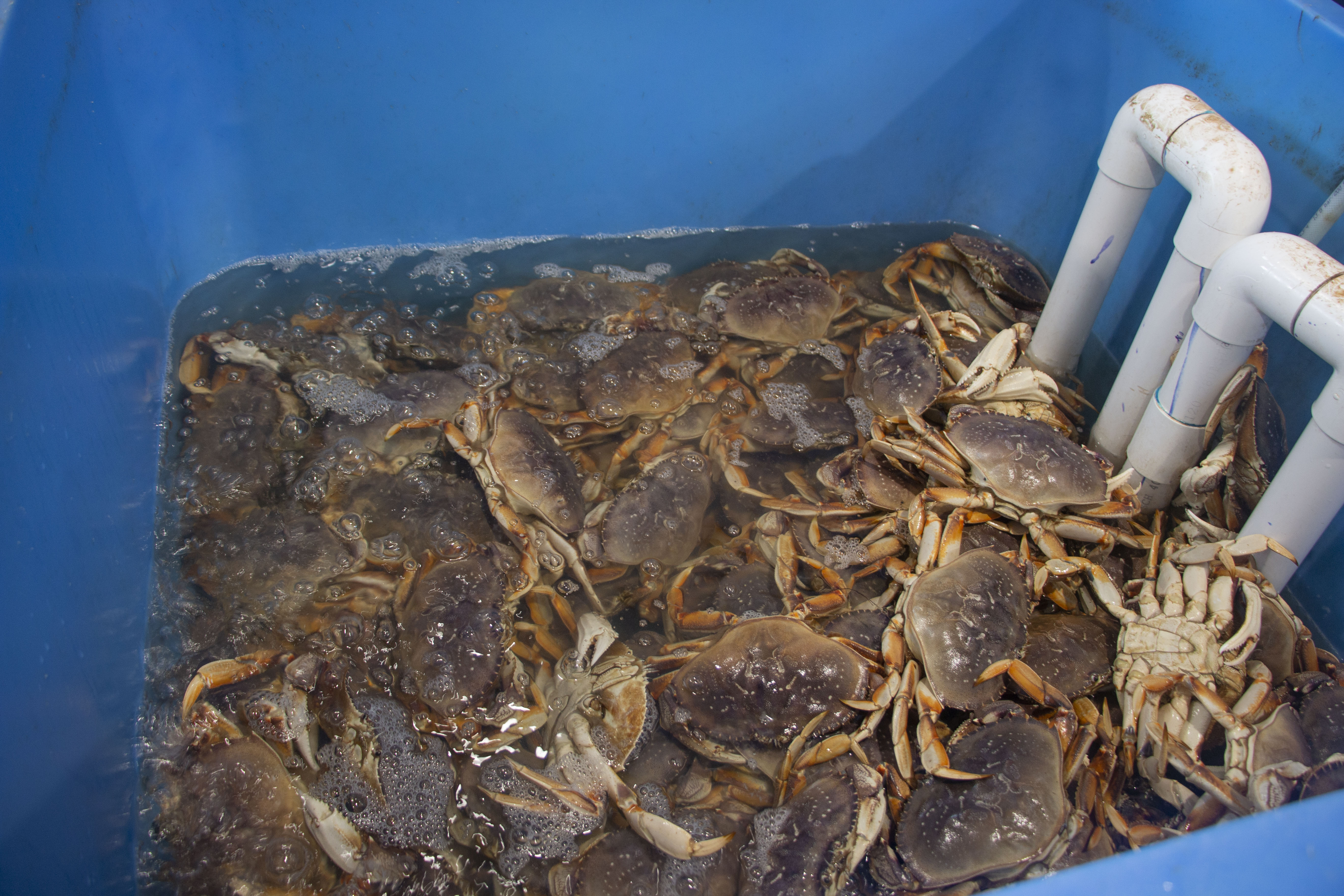
| Safe Coast Seafoods imports 70,000 pounds of crab from Canada every two weeks.
However, sellers are wary about the market for out-of-state crabs. “You got to be really careful about that because you bring them down here, if you have an inventory left and the local season opens,” said Bob Costarella, owner of Costarella Seafoods, “then you get stuck with the more expensive crab.”
To minimize uncertainty, Costarella decided not to step too deep into the crab supply chain. He says the loss of the Thanksgiving crab market last year affected less than 5 percent of his business. Costarella also found that consumers are unaware of the availability of imported crabs, so they “don’t even bother to come down to the pier,” he added. “Local season closed, local season hasn’t started yet, this is all they heard.”
Limited supply and high transportation and labor costs drive up the price of Washington State crabs that come to California. Dan Strazzullo, the third generation of a seafood-selling family that now owns Peninsula and All Shores Seafood, says they usually buy crabs at from $3 to $5 per pound during local crab season, but now are paying $9.5 to $11 for Washington crabs, which he sells at $14.99. That reduces his sales volume from 2,000 pounds a week, when he sold local crabs at $8.99, to 300 pounds now. “So you can see the difference, it’s huge,” he continued. “I don’t blame them, though. You’re going to put a two-pound crab on a scale and you’re going to pay $30, that’s crazy.”
Patrick Guyer, founder of One Ocean Seafood, said that the high prices further tighten the supply chain. He recently lost a corporate customer for which he had been the primary supplier for more than six years when the grocery store switched to bigger companies offering lower prices. To stay competitive, Guyer added offerings other than seafood in his online store, including beef, lamb, pork, and even fruit and vegetables.
As for the restaurants, Crab Station manager Petitt says some customers are still willing to pay the high prices, but not the regulars. Crab Station therefore turned to selling to “little eateries, the fast-food” to make up the revenue. “It sells pretty well,” she said. “This is a stable price all throughout.”
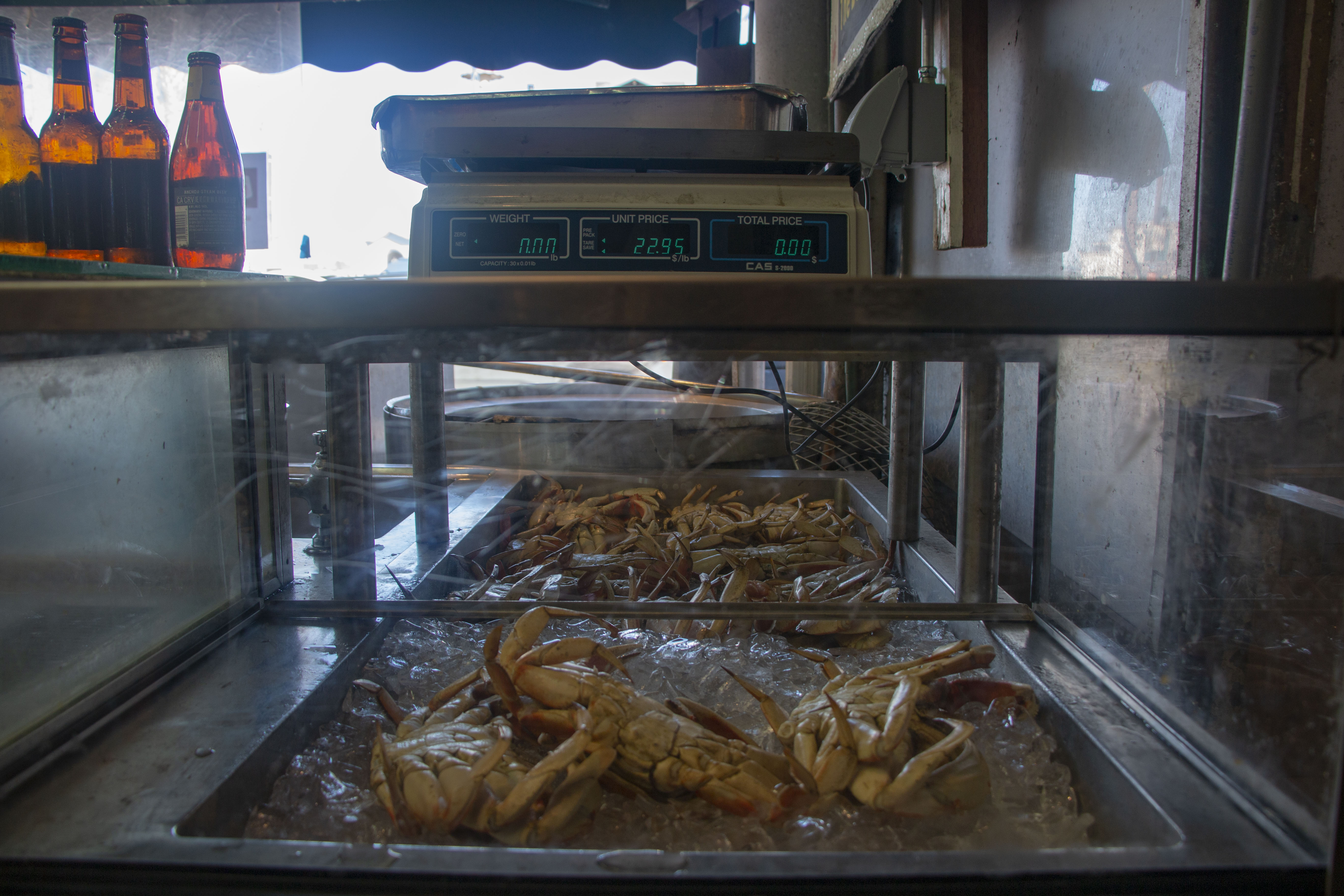
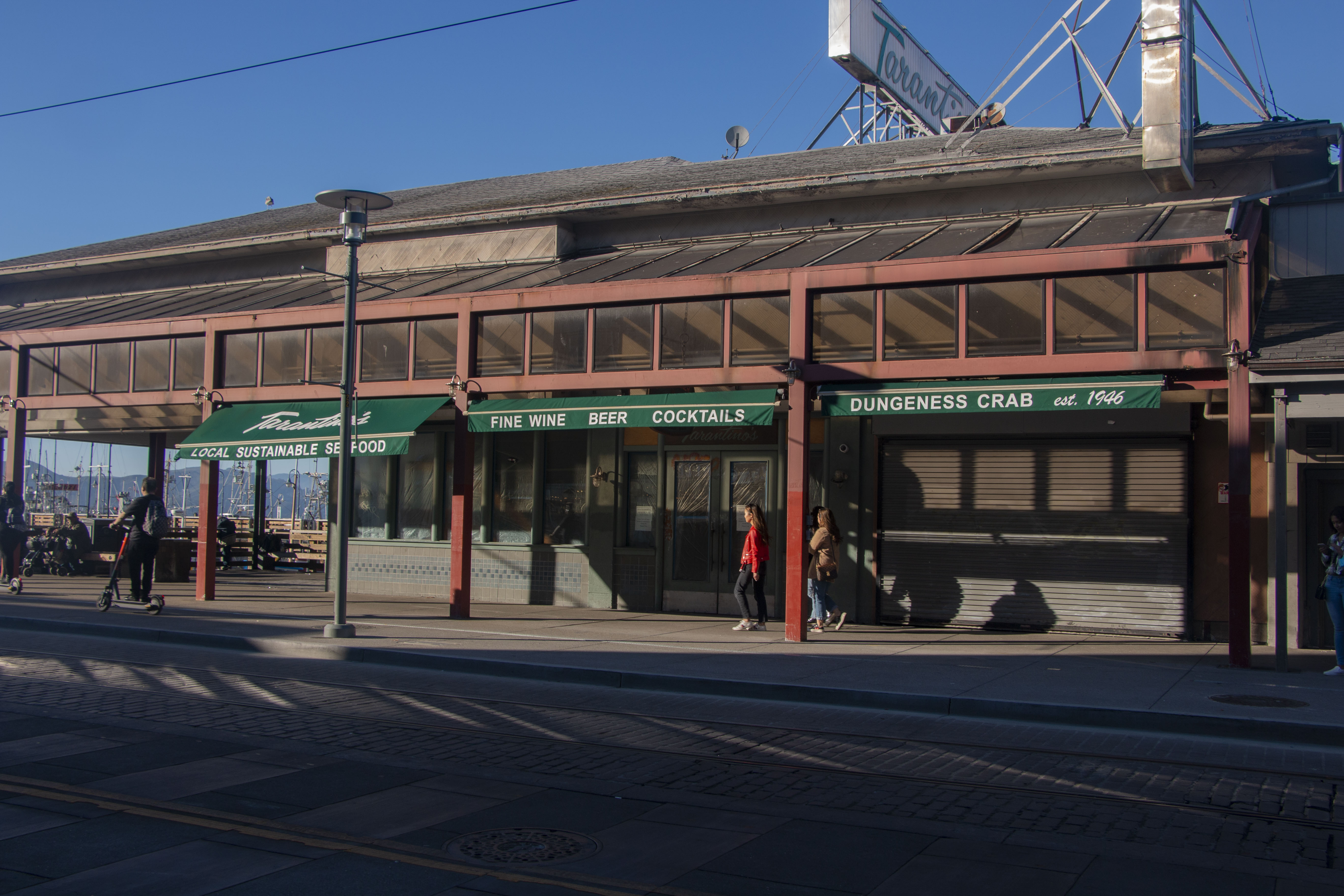
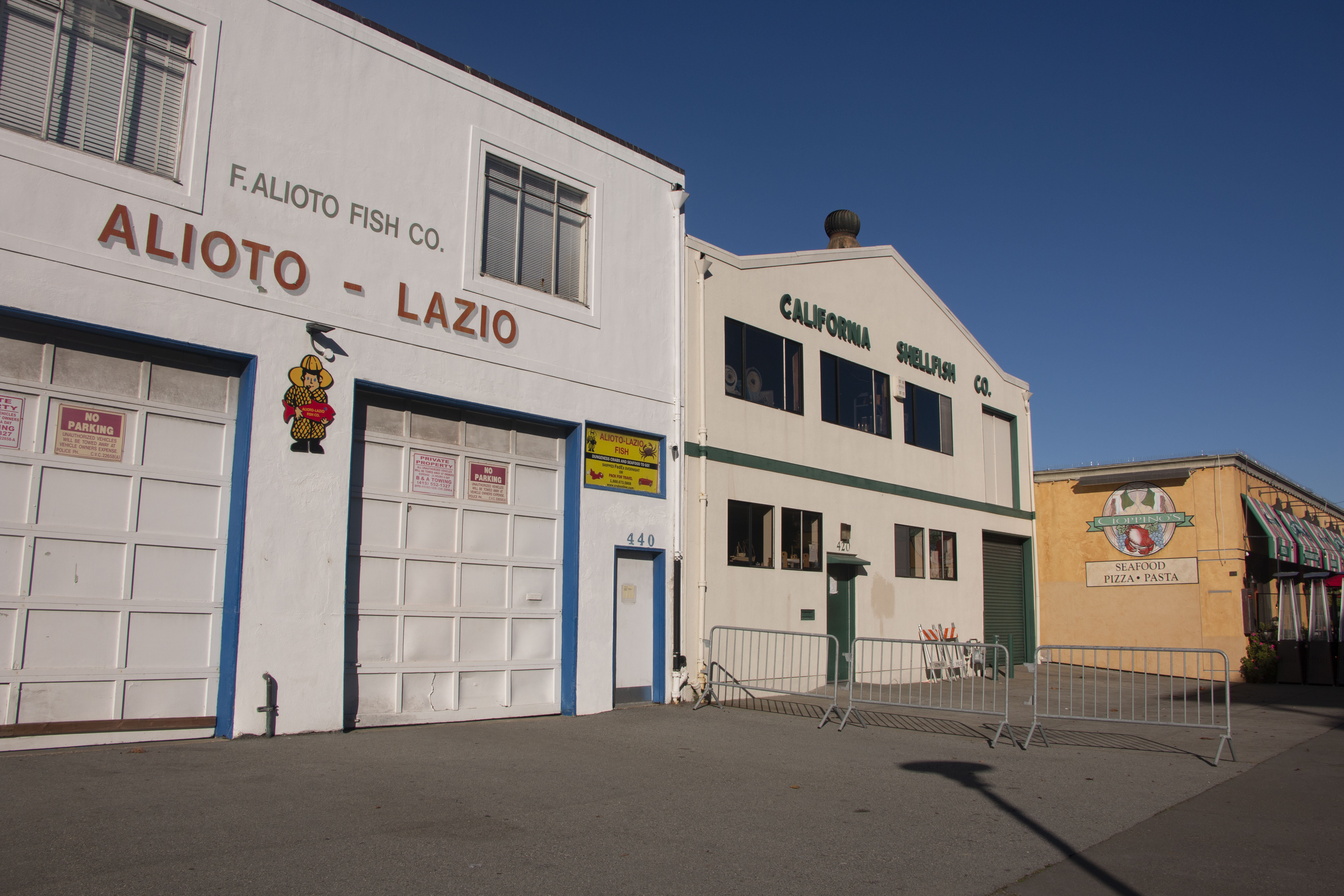
| Pier 45, once full of tourists, was deserted. Nearly half of the seafood restaurants have closed.
Franciscan Crab Restaurant also added menu items. “When you sell crab, you got to buy it whatever the price is,” said the owner Serafini. “Whenever you raise something one dollar, immediately fewer people buying it, one dollar is enough,” Serafini said. The restaurant now pays 20 percent more than a year ago for Washington crabs, from around $8.75 to almost $11 per pound. “When people look at the price of crab and they’ll say, ‘I’d rather have branzino or salmon.’ A lot of people order different items.”
Sabella & LaTorre’s, a family-owned restaurant established in 1927 next to Crab Station, is also bringing in crabs from Washington State and struggling to sell 50 to 60 pounds a day, compared with 200 before the pandemic. Owner Tom LaTorre said that when crabs become expensive, “no matter for Thanksgiving or Christmas, a lot of people will say forget about it,” he added.
Though the U.S. lifted the international travel ban Nov. 8, LaTorre says he doesn’t expect more tourists in the coming holiday season. “We have to check vaccine cards, so I get to see where people are coming from. There were some from Canada, from Mexico, not many Europeans, not Asians at all,” said LaTorre. Visitors were once a major source of business, and postponement of the crab season has caused him to lose more “regulars that keep our door open,” he said. “This [Pier 45] was a thriving block, now you see, only two of us are operating on a Saturday!”
He’s eager for the local crab season to open. “The sooner it starts the better, the price will come down and we can sell a lower price for locals,” LaTorre said.
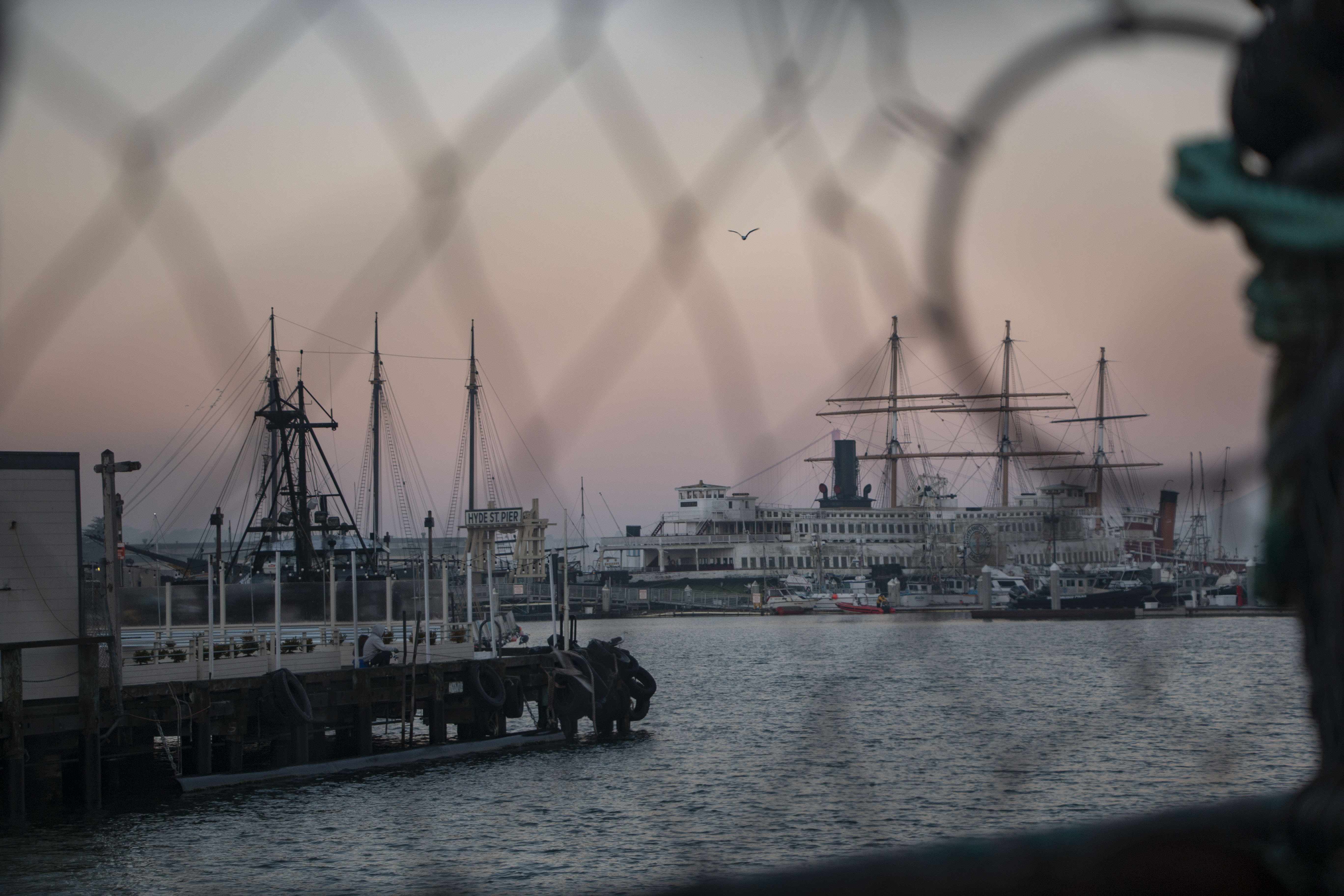
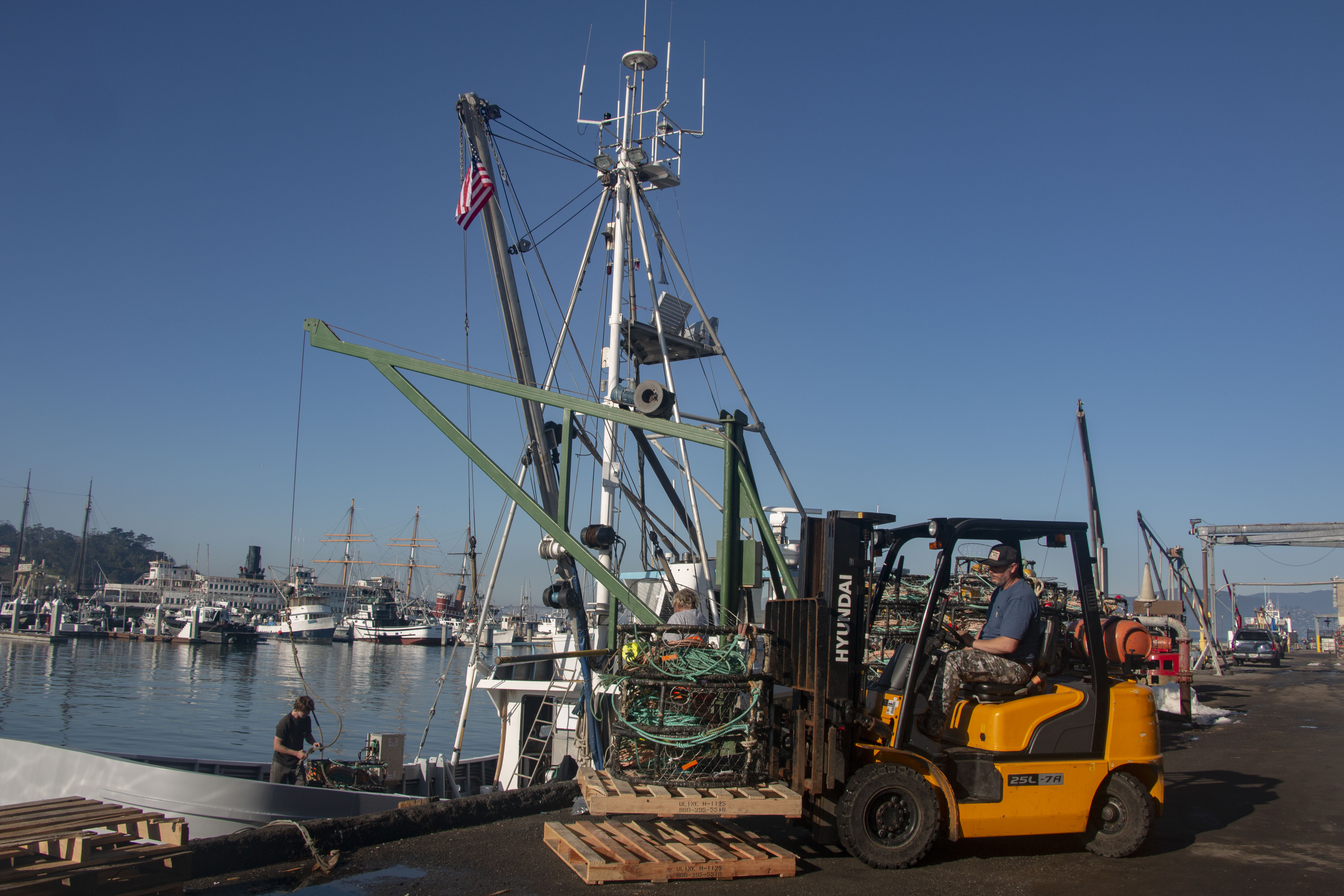
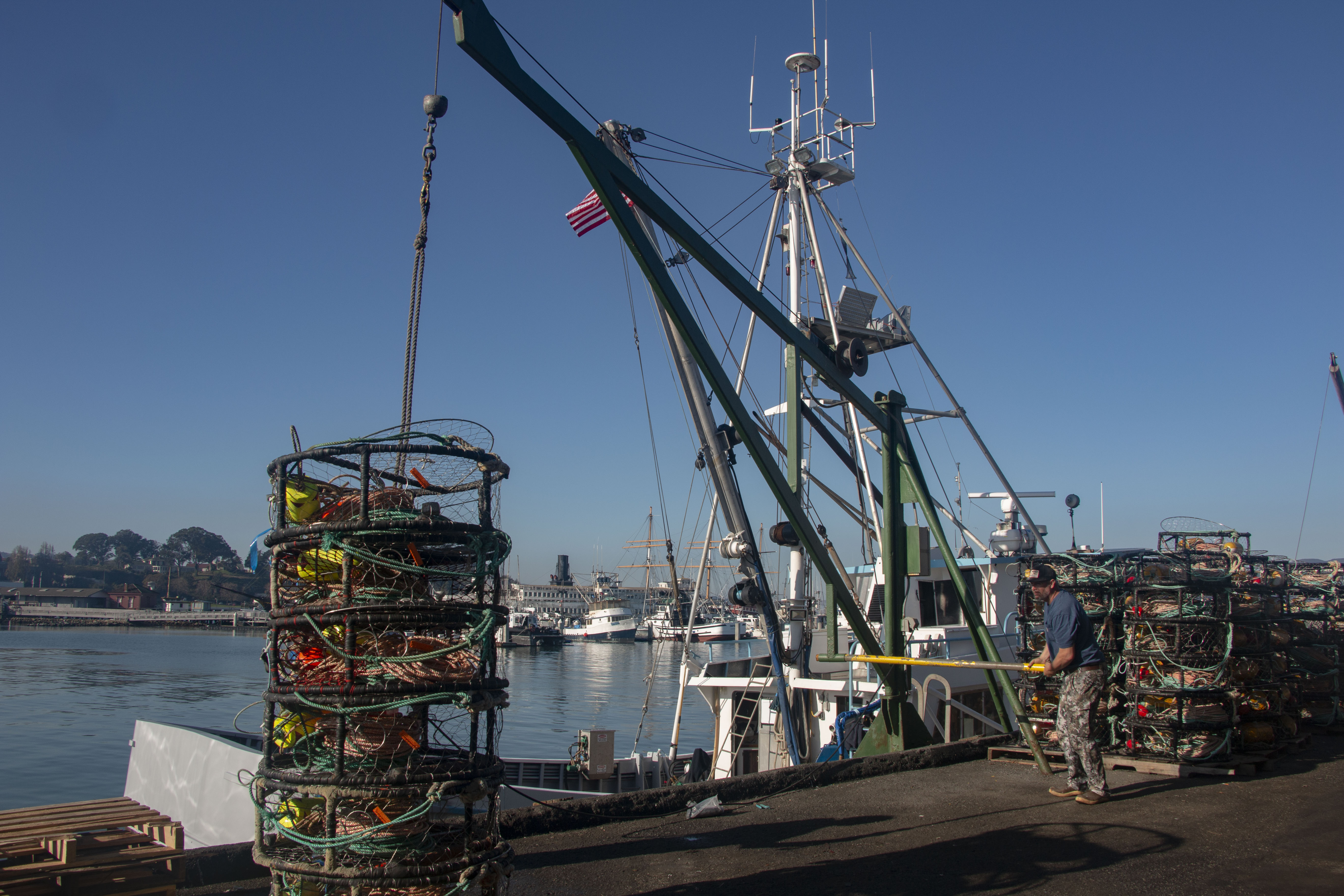
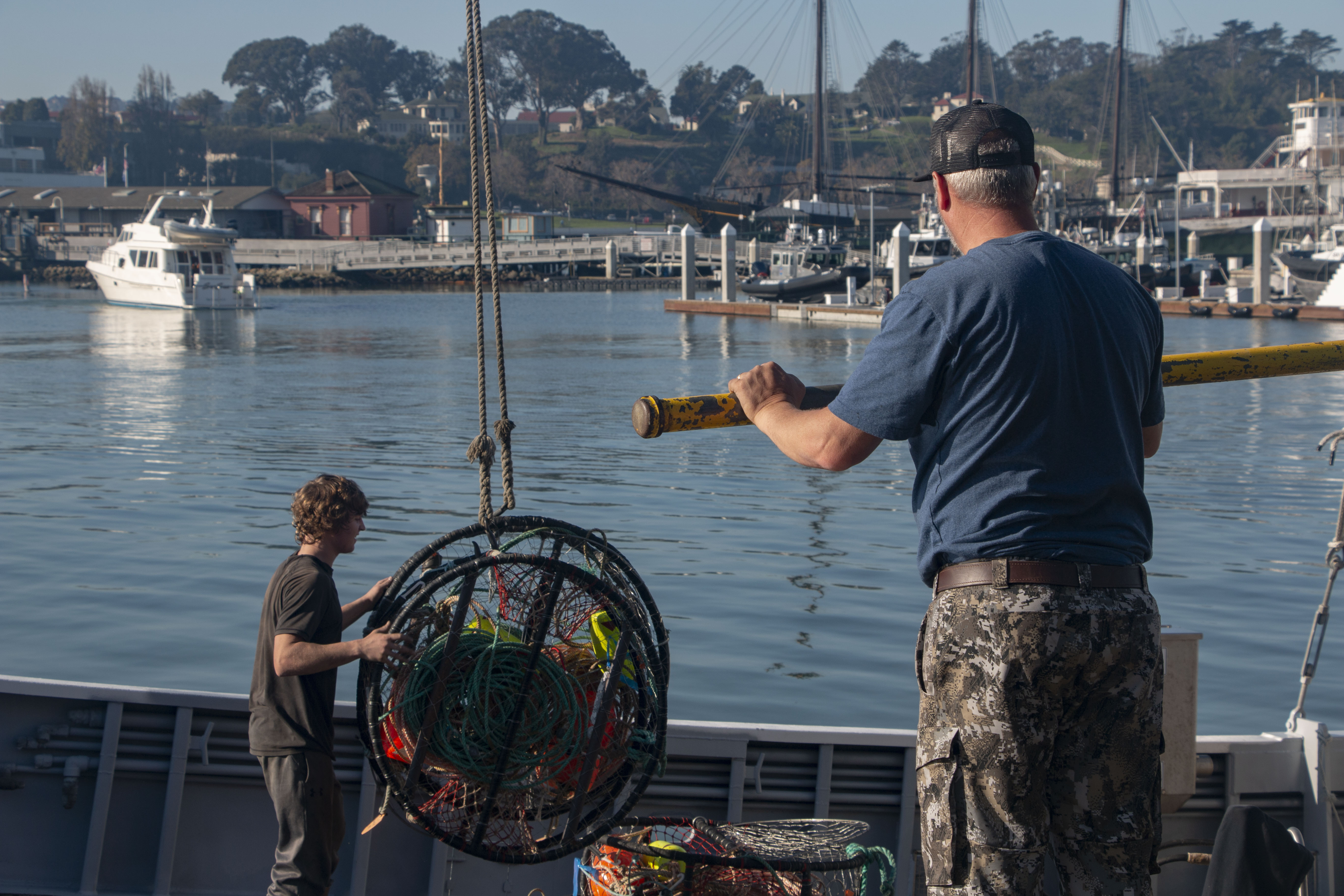
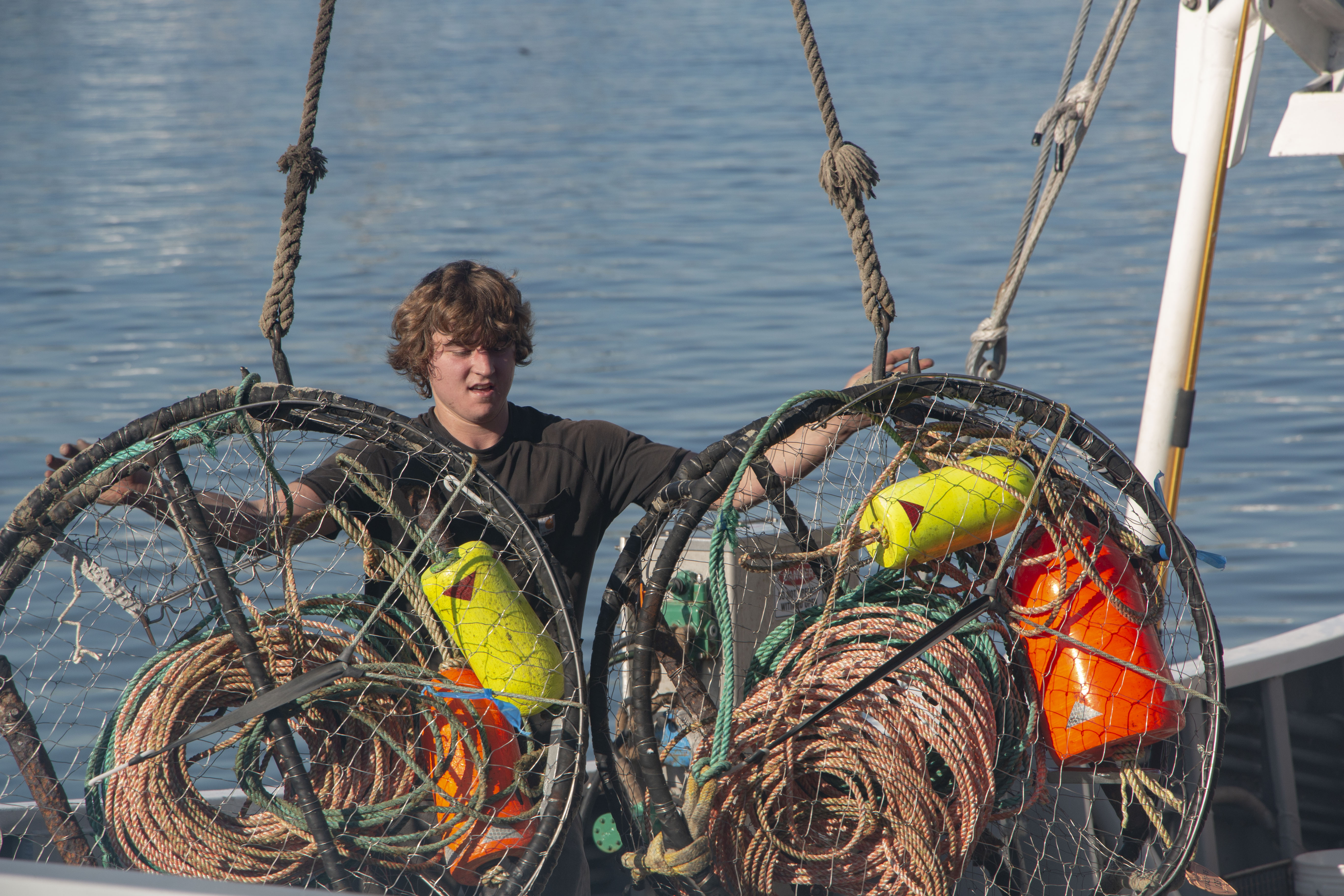
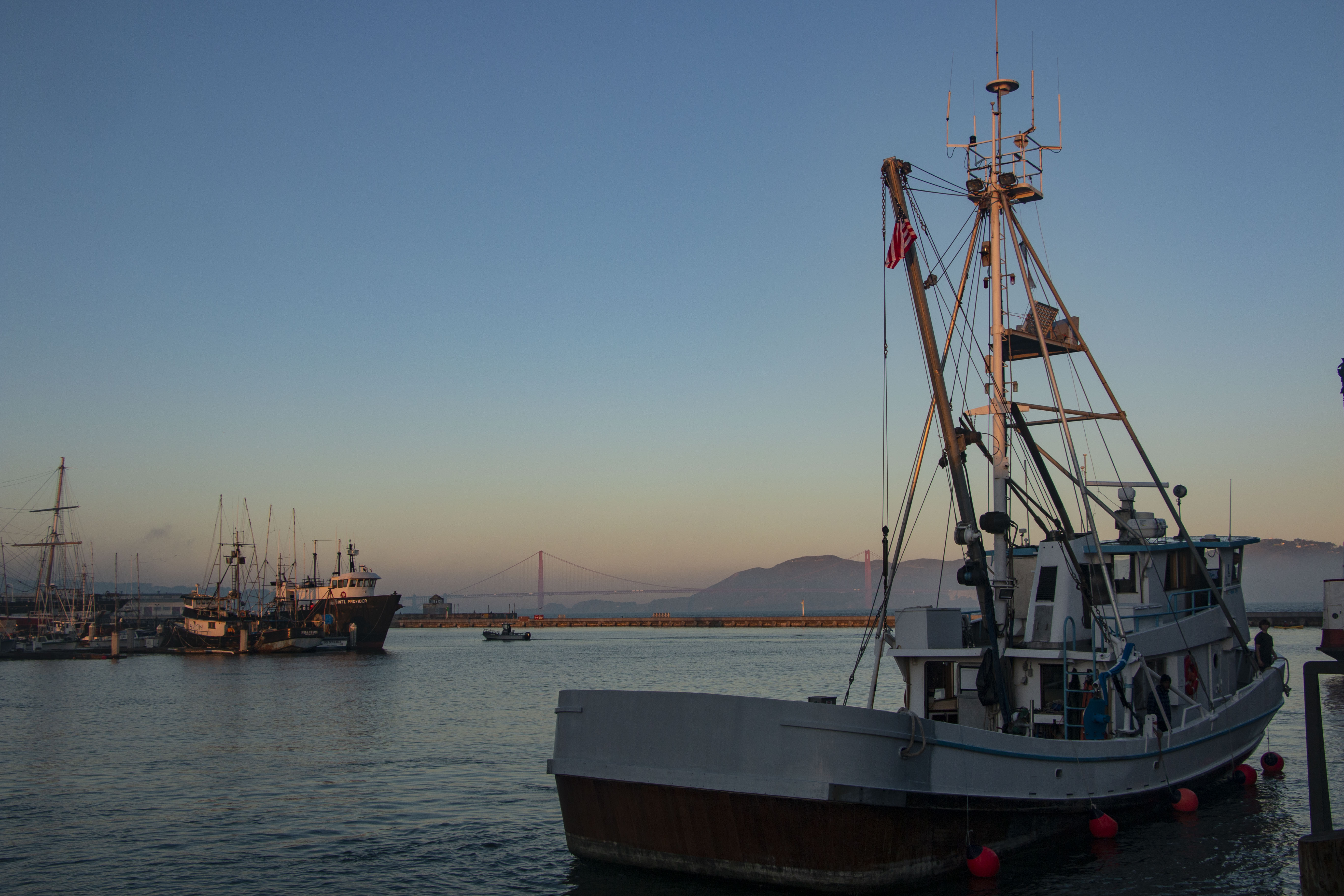
| Usually, crabbing workers come to the pier in the early morning to carry equipment, then drive to the open sea to place traps. With a delayed local crab season, some captains decided to try their luck in other districts.